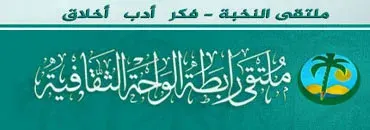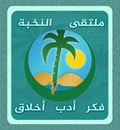The Staff and the White Hand: Meditations on Liberation and Power
By: Il-Yasa Nasir
Dervish from Yemen
The story of Moses and Pharaoh in the Qur’an is not merely the recounting of a miracle; it is a window into the nature of power—and the path to liberation from it. When we contemplate the two symbols, the “staff” and the “white hand,” we uncover a fundamental struggle between two opposing forces: one built on fear and illusion, the other emerging from truth and offering peace of mind.
The staff that turns into a serpent is not a dazzling spectacle—it’s a profound symbolic message: Do we use our power to terrify others, or to expose deception and support truth? The white hand, too, is a light that reveals what was hidden—without humiliating or intimidating.
This ancient struggle is repeated within each of us. Pharaoh is not just an external tyrant; he is an inherited internal fear, born of the prisons of power that have overtaken our hearts. True liberation begins when we extend a hand full of certainty that brings peace—not threat.
The Staff: Attributed Identity and the Essence of Power
With remarkable Qur'anic precision, the nature of power is revealed through the linguistic attribution of the staff. In the verse:
“So he threw his staff” [Ash-Shu‘ara: 31],
Moses’ name is not mentioned. The staff seems to lack a clear identity. This omission is not accidental; the pronoun refers to Pharaoh, and that "staff," which turns into a “manifest serpent,” represents the tool of intimidation—the authority that injects terror into the hearts of the masses.
Yet in the verse:
“So Moses threw his staff” [Ash-Shu‘ara: 44],
The attribution is explicit, the identity is clear: it is Moses’ staff, not used to terrify people but to swallow falsehood and reveal deception.
This subtle contrast between “his staff” and “Moses’ staff” opens a path to deeply understand the Qur’anic concept of power: the staff in Pharaoh’s hand symbolizes the serpentine archetype—a tool of fear, illusion, and tyranny—while the staff in Moses’ hand represents truth, light, and the power to protect people from illusion rather than frighten them with it.
The Serpent: Not the Staff of Moses
Not all staffs in the Qur’anic story are the same. There is Pharaoh’s staff, Moses’ staff, and the staffs of the magicians. The staff that turned into a serpent was not Moses’—it was Pharaoh’s. Moses did not showcase a miracle for spectacle; rather, he exposed the source of fear that had overwhelmed the people.
When the Qur’an says:
“So he threw his staff, and behold! it was a manifest serpent”—Moses’ name is omitted, because the staff is not attributed to him here.
In contrast:
“So Moses threw his staff, and it swallowed what they falsified”—here it is clearly his, and its function is purifying, not terrifying.
When Moses exposed the serpentine nature of Pharaoh’s staff, he did so publicly. He also drew out his hand, revealing the falsity of that authority. As the Qur’an says:
“He drew out his hand, and behold! it was white [with radiance]”—a symbol of revealing truth in the face of intimidation.
From Pharaoh’s Palace to the Sacred Valley
Moses grew up in Pharaoh’s palace and absorbed its authoritarian culture. So, when he saw injustice in the city and struck the man from the enemy camp, killing him—it wasn’t prophetic behavior; it was the reflex of someone shaped by the violence of power.
At that time, his staff was still under Pharaoh’s influence, and so he used it violently. But when God called him to the Sacred Valley, He said:
“Throw down your staff”—a command to let go of the tool steeped in the culture of intimidation.
Then: “Do not be afraid”—for when Moses saw the serpent, he fled—not out of awe at a miracle, but due to the lingering fear rooted in his palace trauma.
The pivotal moment in Moses’ life did not occur before Pharaoh, but in solitude with God, where he was purified from the heritage of intimidation he had inherited. The staff was restored to its original purpose: a tool of truth, not a weapon of power.
The Many Staffs, the Many Worlds
The Qur’an presents the staff in multiple symbolic forms:
A manifest serpent in Surah Ash-Shu‘ara: in a watery emotional realm, reflecting systems of collective fear, like an anaconda dwelling in rivers.
A moving snake in Surah Taha: in an earthy tactile realm, symbolizing the early prophetic awareness of the physical world and reality.
A slithering apparition in Surah An-Naml: in a spiritual psychological realm, pointing to deep internal processes within the human soul.
This gradation is not merely linguistic; it aligns with the type of consciousness in each Qur'anic context. Surah Ash-Shu‘ara ends with:
“The Trustworthy Spirit brought it down upon your heart”—a sign that change begins from the heart, not from the staff.
The Magicians’ Staffs: The Collapse of Collective Illusion
When Pharaoh summoned the magicians, it was because his own tools—his staff and hand—had lost their effectiveness in the face of Moses’ renewed awareness. So he turned to the machinery of his system that relied on fear fabrication: sorcery and visual deception.
But Moses’ staff, having regained its prophetic meaning, swallowed what they had conjured—not in a literal sense, but in a symbolic one: it collapsed the illusion upon which their power was built.
The Mosaic Argument: Protecting People from Fear
When Pharaoh asked:
“Who is your Lord, O Moses?”—it wasn’t merely a theological question; it was a question about the source of political legitimacy.
Moses’ answer was more in action than in words:
His staff did not become a serpent, but devoured falsehood.
His hand was not a sword, but a white light through which hearts could see.
He clearly declared: "You rule through fear. I see power as the protection of people from fear."
The Staff in Our Time: Breaking the Spell of the Age
Pharaoh’s staff has not vanished. It has taken new forms:
Media that fabricates illusions, hiding truth behind serpents of twisted news.
Dazzling laws that suffocate the weak.
An economy that produces fear, decorating it with false progress.
Digital tools used to intimidate and deceive, not enlighten.
But the Qur’anic solution doesn’t call for destroying the tools, but transforming them:
“Throw what is in your right hand—it will swallow what they have made.”
Here, the staff becomes a tool for revealing truth, not spreading fear.
A Historical Spark
Gandhi, with his “spiritual staff”—nonviolence and satyagraha—shattered British colonialism, not through bloodshed, but with unwavering conviction. Like Moses, he transformed instruments of oppression into tools of liberation. He needed no army—just a heart free from fear.
The White Hand: A Life Path, Not a Spectacle
The white hand is not a moment of supernatural spectacle; it is a lifelong method. It symbolizes the possibility that tools of authority—media, law, economy—can become a hand that illuminates, not burns; that protects, not threatens.
God says:
“And We left [his story] for those who came later” [As-Saffat: 118]—this prophetic model lives on in human memory, awakening in us the ever-relevant question:
Do we use our power to intimidate—or to liberate?
Finale: The Staff That Uplifts, Not Strikes
Here, in this moment between fear and serenity, the staff reveals its deepest meaning, as seen by the gnostic master Al-Harrali—not as a wooden stick, but as a symbol of wise authority: one that disciplines without domination, that lifts rather than humiliates.
The Arabic root of ‘asa (staff) contains dual meanings:
The waw in “عصو” (ʿaṣw) implies elevation.
The ya’ in “عصى” (ʿaṣā) implies descent.
As if the staff was made to raise the fallen from disobedience to the heights of obedience.
God made it a double sign: with it, a people were given water, and another was vanquished. Mercy and wrath both appeared through it. But complete empowerment came to Prophet Muhammad ﷺ, when water flowed from his fingers—without staff or stone—because when a person is purified, he becomes the staff, the water, and the light.
And so, the community of Muhammad ﷺ was left with a spiritual staff that never perishes: the two closing chapters of the Qur’an—Al-Mu‘awwidhatayn.
They are the staff of this Ummah, swallowing every illusion, nullifying every fear, shielding from every whisper and hiss.
They are the weapon of the heart, not the hand—the staff that strikes fear, not humans.
Let us reshape our staff before we raise it.
Let us purify our hands before lifting them.
For the staff that rises above the heart will cause it to fall.
And the hand not connected to light will go astray.
But the one who makes of his staff a guide, and his hand a lamp of serenity—has discovered the secret of Moses… and a power made of light.
This is a message of human liberation from the Qur’an.
I present it as a model of transcendent symbolic thinking—
wishing it could be engraved on the gates of the United Nations—
to correct the very concept of “power” in international politics.





 رد مع اقتباس
رد مع اقتباس